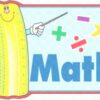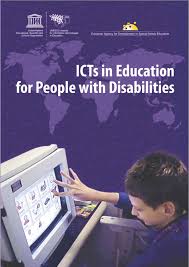LANGUAGE TEACHING STRATEGIES FOR LEARNERS WITH INTELLECTUAL DISABILITIES IN CLASSROOM SETTING
₦10,000.00 ₦3,000.00
Every learner is unique and has own learning style that is affected by his or her personality factors. Learning style or individual preferences in child’s learning result from his or her main thinking. This involves the use of visual materials which include pictures and reading. Learners who can hear like listening to explanations and reading aloud. Learners who are physically stable need physical activity to help them learn. Also, learners who like interacting with people are sociable and eager to use language for communication. Meanwhile, learner who love to be lonely are always quiet and reflective and learn by listening and observing (Ranjeetah, 2018). It is the duty of teachers to provide a variety of strategies in the activities of teaching as carefully structured for input and practice opportunities, catering for different learning styles (Ranjeetah, 2018).
Description
CHAPTER ONE
1.0. INTRODUCTION
1.1 Background to the Study
Education is a process by which the mind of human being develops through learning at homes, streets, religious institutions like churches and mosques, schools, colleges or universities. It is also a process whereby a person develops attitudes and abilities that are considered to have value and relevance in the society. It is the best legacy a nation can give to her citizens especially the youth. Every nation hoping to have bright future needs to emphasis education because it is the only way to much development. Raheem (2018) notes that education must be considered as a key investment in modern economies because, as previously seen within the framework of a knowledge-based economy, there are strong and positive correlation between economic activity and education in explaining economic growth. As a result, parents should make sure they put all positive machinery that will assist the academic performance of their children so that they can secure a better future for them economically. In line with this, it is essential that schools play pivotal roles in ensuring that students succeed in their academic performance.
Every learner is unique and has own learning style that is affected by his or her personality factors. Learning style or individual preferences in child’s learning result from his or her main thinking. This involves the use of visual materials which include pictures and reading. Learners who can hear like listening to explanations and reading aloud. Learners who are physically stable need physical activity to help them learn. Also, learners who like interacting with people are sociable and eager to use language for communication. Meanwhile, learner who love to be lonely are always quiet and reflective and learn by listening and observing (Ranjeetah, 2018). It is the duty of teachers to provide a variety of strategies in the activities of teaching as carefully structured for input and practice opportunities, catering for different learning styles (Ranjeetah, 2018).
However, when teaching a child with intellectual disabilities, knowing his or her learning style is not enough to secure his or her successful learning in classroom. Teacher should also consider child’s abilities and his learning difficulties, like short concentration span and slower learning pace that may easily affect the child in learning a foreign language. Teacher can help the child by letting him or her practice a particular language structure by repeating it as many times as needed (in well-structured exercise), being very patient and not interrupting the child, but encouraging him or her, praising his or her effort and building the child’s confidence. Instead of correcting the child, teacher should ‘model’ the correct form, or allow the child to ‘shadow’ the recorded text (Algatani, 2017).
Mapping the effectiveness of different approaches and strategies employed to respond to the full range of children’s special educational needs is a complex task because the field is broad, covering a range of educational needs across all phases of education. This scoping study drew upon national and international publications, including reviews of research findings, individual research reports and professional guidance for teachers. One of the key factors scholars considered was the extent to which the review should be led by literature that refers to categories of strategies of teaching intellectual disable persons.
1.2 Statement of Problems
The roles of language in understanding is very essential. This is because language is the first receptive and expressive skill that every able child develops. All able child starts listening to the sounds around him and starts reacting to those sounds. This shows that if a learner is having an intellectual problem, the power of language can assist him to perform better.
Learners with intellectual disabilities need different strategies to be taught with. This is because their vastness of understanding is very low. However, it is believed that many teachers use to teach them the same way able children are taught in school. Often time, some teachers do believe that single method of teaching is better as perceived by the teachers. This assumption now bothers the researcher. On this, the researcher set to carry out a study on Language Teaching Strategies for Learners with Intellectual Disabilities in Classroom Setting.
1.3 Purpose of Study
The purpose of this study is to look into:
- Nature of learners with intellectual disabilities
- Factors affecting academic performance of learners with intellectual disabilities
- Language Teaching Strategies for learners with intellectual disabilities in classroom setting.
1.4 Research Questions
- Of what importance is teaching strategies to the academic performance of learners with intellectual disabilities?
- To what extent does the use of suitable teaching strategies motivate or interest learners with intellectual disabilities?
- Is there any differences in the achievement of students taught with suitable teaching strategies and those taught as their able counterpart?
1.5 Significance of the Study
This study helps to show the need to employ language teaching strategies for learners with intellectual disabilities in classroom setting. The study is significant because it helps to show the modern effective method in teaching learners with intellectual disabilities. The research work is also significant as it will help improve learners with intellectual disabilities in their academic performance especially during examination. It will also help to inculcate in teachers the habits of using divergent teaching strategies which are appropriate in teaching learning process to arouse interest and determination among students with intellectual disabilities.







Reviews
There are no reviews yet.